Category: Angola Food Foods Top List
Source: https://top-list.co/top-best-angolan-foods-v3187.html
- Kizaca (Quizaca OR Kisaca)
- Funje
- Muamba De Galina (Chicken Muamba)
- Cabidela
- Peri-Peri (Piri-Piri)
- Kwanga
- Leite Azedo
- Catatos
- Cocada Amarela
- Calulu De Peixe
Kizaca (Quizaca OR Kisaca)
The traditional Angolan cuisine kizaca, sometimes known as quizaca or kisaca, is one of the country’s most popular vegetarian dishes. It’s made from cooked cassava leaves and ground peanuts. Cassava and peanuts are cooked until the dish thickens and the peanuts make a smooth, nutty sauce.
Although it is currently considered the country’s national dish, kizaka has an interesting historical past. Angola was a Portuguese colony for centuries, and kizaka, like most Angolan cuisines, is a fusion of European and true African ingredients.
Surprisingly, the major component, cassava, was brought to Angola from Brazil, another former Portuguese colony, where it is considered an indigenous ingredient. The most popular variant in Angola is kizaka com peixe, a dish cooked with fish, onions, and tomatoes, with rice served on the side.
The dish is popular throughout Angola, and it is typically served as a side dish with meat or fish meals. Green cassava leaves are frequently replaced w spinach.
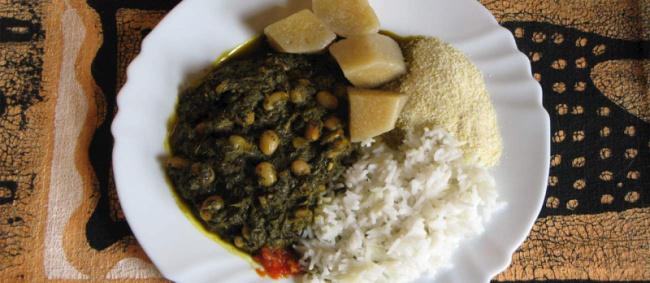
https://www.tasteatlas.com/
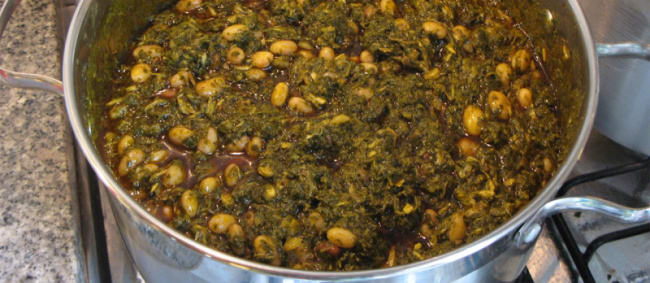
Funje
If you’ve tasted this delightful Angolan dish, you’ll understand why it’s the first on this list of 10 great Angolan recipes you’ll love. It is not surprising that Funje is a popular staple in Angola; even though it is frequently regarded as a side dish or an accompanying dish for breakfast, dinner, or lunch, it still holds a very special place in the hearts of those who have had the opportunity to experience the flavor and taste of this delicious Angola dish.
This Angolan meal is a type of porridge that is often created with cassava and then blended with water. This Angolan dish’s texture would be described as sticky, creamy, and silky. Funje’s taste is what makes it such a delicious Angolan cuisine.
To get the full experience of this Angolan dish, it is often paired with a delicious and spicy sauce, which adds extra flavor to the dish. The taste of the spicy sauce, coupled with the delicious cassava porridge, is something you will have to try for yourself because words will not do this Angolan dish justice that the taste will.

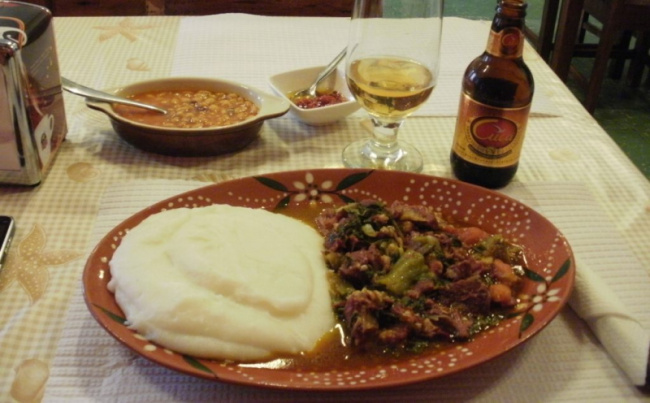
afktravel.com
Muamba De Galina (Chicken Muamba)
It would be unjust to the chicken fans out there if there was no chicken meal on this list of great Angolan foods you would enjoy, therefore here is a unique Angolan cuisine dedicated to the chicken lovers. If you’ve been looking for a tasty, juicy, nutrient-rich, and rich chicken dish to try, your quest is over since Muamba De Galina has arrived to take your favorite African chicken dish’s place.
Chicken Muamba is a delectable Angolan chicken dish made with palm oil, often known as red oil sauce. Muamba de dendem garlic, okra, and gindungo are some other names for this crimson palm oil sauce. This is an Angolan chili pepper. If you’ve ever experienced palm oil, you’ll know that it has a very distinct and unusual flavor. The flavor of the palm oil enhances this Angolan meal with its rich and savory flavor and red hue.
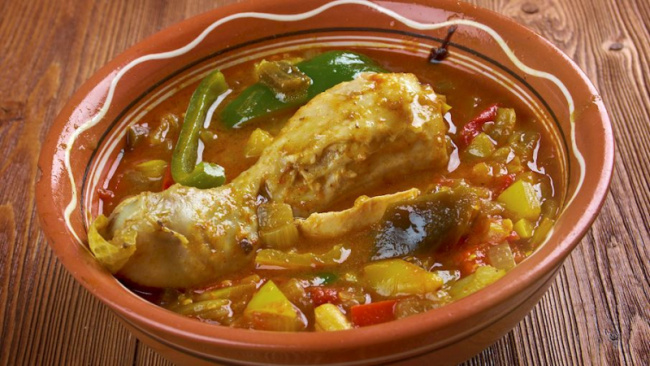
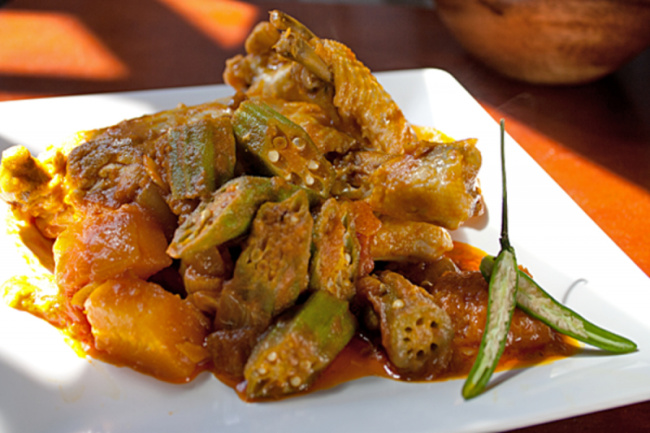
conexaolusofona.org
Cabidela
Cabidela is the next Angolan meal on this list of 10 Delicious Angolan Dishes That Will Astound You. Cabidela is a Portuguese dish that consists of fowl (or game meat) and rice cooked along with the blood of the animals. Rice can be cooked alongside the meat or served as a side dish. Vinegar or red wine are occasionally used to balance the tartness of this excellent Angolan cuisine.
As previously said, some Portuguese foods can also be termed Angolan dishes, therefore this delectable delicacy is also a classic dish in various African countries such as Angola and Brazil.
Cabidela is a Portuguese delicacy known for its distinctive black color and creamy texture. It is traditionally linked with various places in Northern Portugal. It is also used in traditional Brazilian and Angolan cuisine. If you are planning a trip to Angola, this dinner is a must-try.

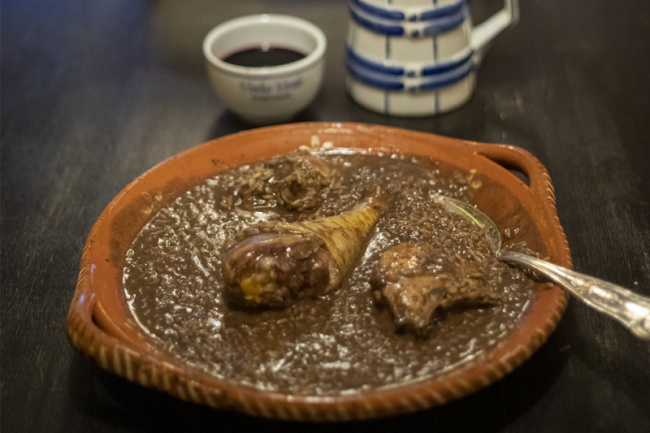
revistadevinhos.pt
Peri-Peri (Piri-Piri)
You will have to pay great attention to this delectable Angolan sauce since you do not want to miss out on it. Piri-piriis an African sauce with several variations across the continent, however this style of sauce originated in some African countries such as Mozambique or Angola.
This Angolan sauce has a lengthy history, dating back to the 15th century when Portuguese settlers in Mozambique and Angola employed red wine, birds eye chili peppers, paprika, garlic, and other European ingredients. This Angolan sauce has subsequently become a global favorite, with fans in places as diverse as South Africa, Australia, and Canada.
Chili peppers, Vinegar, Paprika, Ginger, Garlic, Lemon, Piri-piri sauce, Oregano, Tarragon, and Cooking oil are just a few of the components needed to make this delectable Angolan sauce. If you intend to travel to Angola, Peri-Peri is one of the must-try dishes for you.

tasteatlas.com
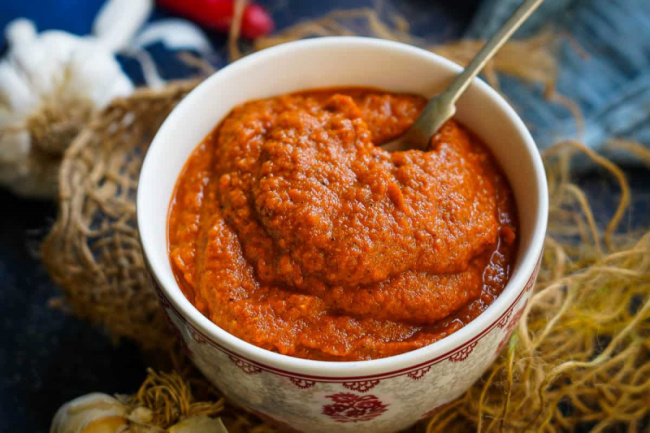
https://www.whiskaffair.com/
Kwanga
Kwanga, also known as chikwanga, is a traditional bread from the Democratic Republic of the Congo. It is made of cassava flour cakes that are wrapped in banana leaves before being steamed to cook.
The beautiful thing about this delicious Angolan food is that the taste and flavor of this dish blend well with any dish of your choice, so you are free to get creative and enjoy this Angolan dish with whatever you want, just so you can appreciate the mix flavors bursting in your mouth. Isn’t this amazing?
You may pair your Angolan kwanga with:
- You can pair your Angolan kwanga with your favorite dish. You may learn about many African stews by visiting the African food network.
- Kwanga or chikwanga go well with your favorite soup.
- Kwanga can be eaten with your favorite sauce.
Angolan bread is often cut into thick spherical slices. This Angolan meal can be stored for a few days after cooking if kept in the banana leaf wrapping in a dry and cold environment.
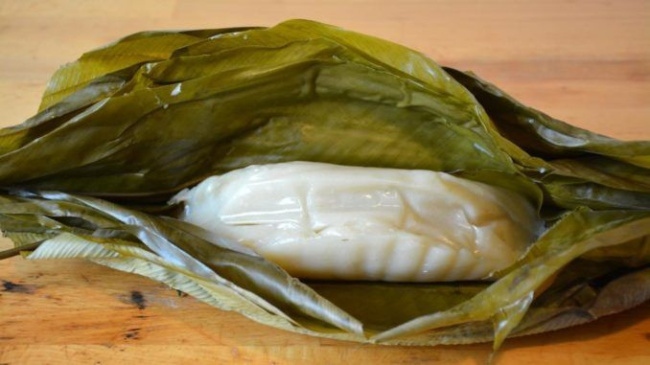
pinterest.com
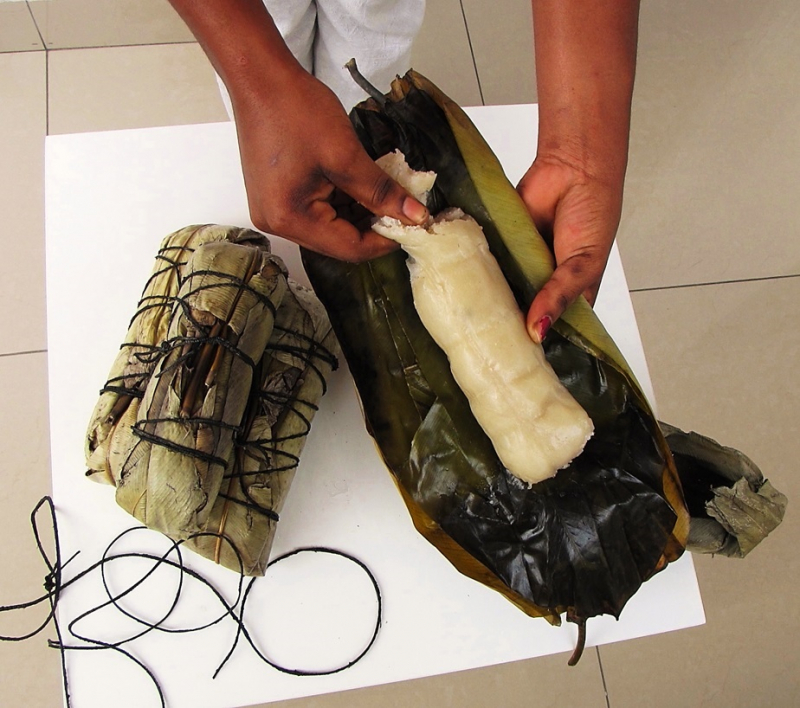
tamaledigest.blogspot.com
Leite Azedo
The indigenous Mucubal population is known for raising their cattle (the Mucubi cattle), which have long supplied them with cow’s milk that needed to be stored for extended usage, giving rise to their lengthy custom of creating sour milk known as leite azedo.
To produce this traditional milk product, village women collect fresh milk into a hupa – a gourd that has been split open and hollowed out but has not been washed. The milk is then left to ferment for many hours before being violently churned for roughly a half hour.
This milk product is typically manufactured for personal consumption and is not marketed commercially. Soured milk can be consumed on its own or as an ingredient in traditional dishes such as mane or manhini, which are produced by combining soured milk, funje (cornmeal porridge), and dried meat or mutton.
The indigenous Mucubal people prepare a traditional sun protection cream by combining a layer of thicker cream (obtained from the surface of the milk) with a reddish rock powder. Unfortunately, the cattle’s potential extinction as a result of climate change has resulted in a much smaller supply of milk, putting this traditional milk product at risk of extinction.
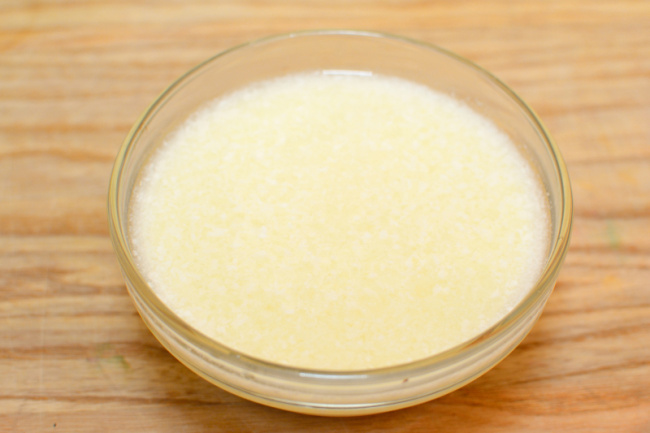
pt.wikihow.com
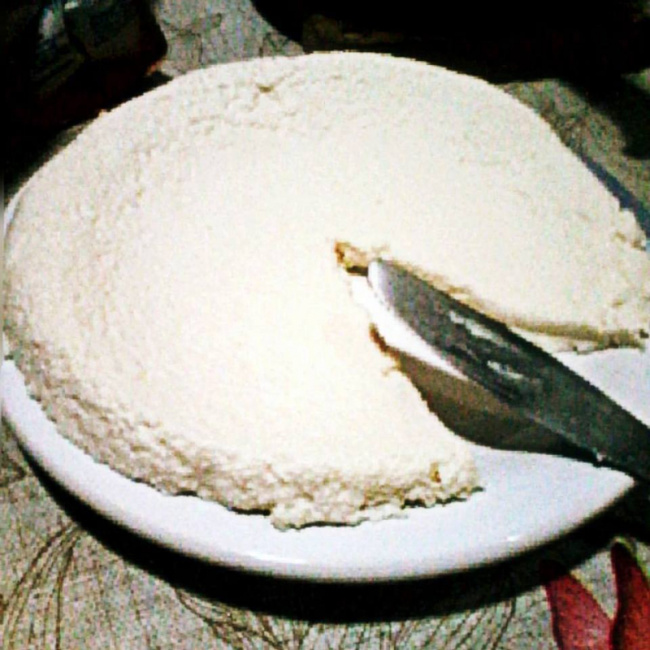
donasabencoadas.com.br
Catatos
Catatos is a one-of-a-kind Angolan dish. The meal is produced by frying caterpillars with garlic at its most basic, although it can be enhanced with the addition of onions, peppers, and tomatoes. The caterpillars should be soft but crunchy, and some people believe they taste like prawns.
The meal is high in nutritional value since caterpillars have more protein and iron than fish or beef. Catatos are best served with rice, funge, and hot sauce. Chili peppers, Onions, Garlic, Peppers, Tomatoes, Salt, and Seasoning are some of the items that will be needed to add some more flavor and spice to this delectable Angolan cuisine.
Catatos is claimed to have a crisp flavor that is akin to prawns, and it is tender and juicy. The other components used in the preparation of this delectable Angolan cuisine contribute to the flavor’s enhancement, making it spicy, flavorful, and extremely delectable. The combination of the components used in the preparation gives this wonderful Angolan cuisine a unique flavor as well as a luscious and rich taste that you just cannot ignore.
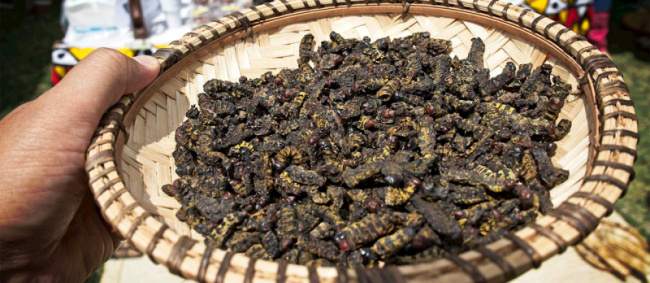
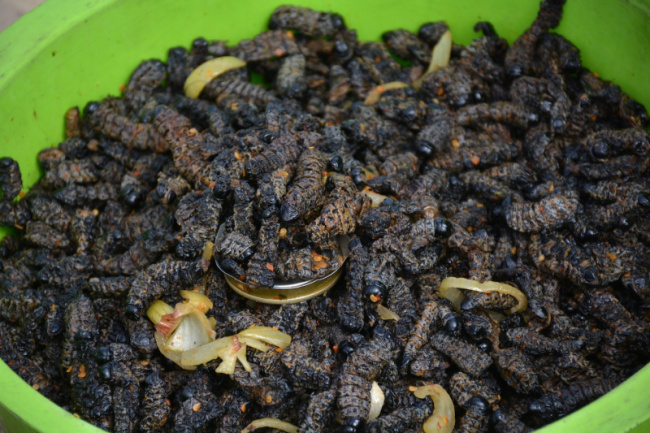
quora.com
Cocada Amarela
Cocada amarela is a sweet Angolan custard or pudding that was introduced to the country by the Portuguese and later adapted by the natives. Water, sugar, salt, grated coconut, and eggs are the main ingredients. The dish is distinguished by its bright yellow hue, which is the result of a huge volume of egg yolks, and thus its name, which translates as yellow cocada.
This wonderful Angolan meal is well-known for its flavor and is generally distinguished by its color and texture. Cocada Amarela has a golden tint due to the large amount of egg yolks used in the making of this wonderful Angolan cuisine. This delectable Angolan meal was later updated and refined by the Angolans, and it includes ingredients such as water, sugar, grated coconut, water, salt, and eggs. Because of the yellow tint of this wonderful Angolan delicacy, the name Cocoda Amarela translates as yellow cocoda in English.
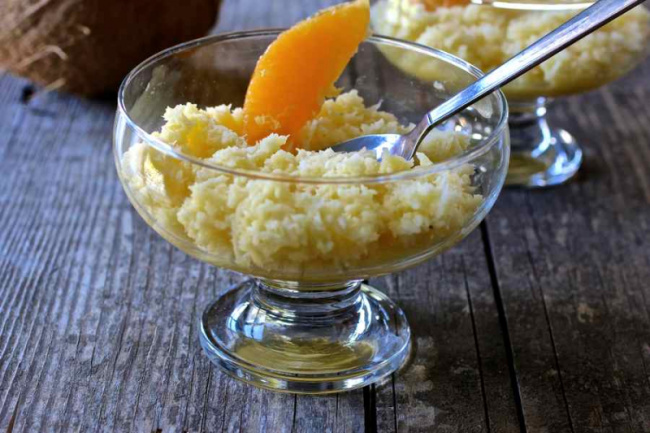
196flavors.com
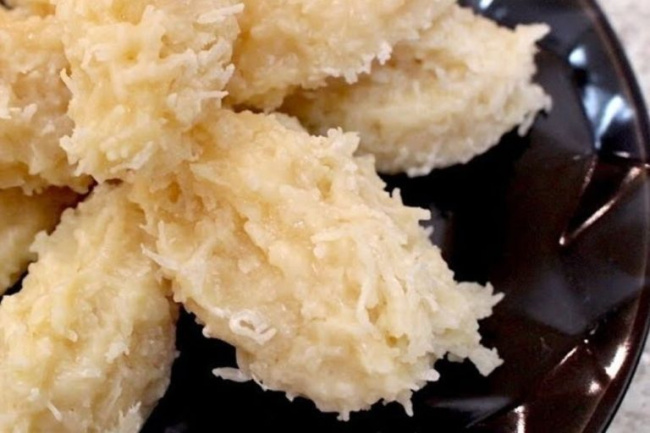
suacozinhafacil.com
Calulu De Peixe
Calulu De Peixe is the final Angolan cuisine on this list of ten wonderful Angolan dishes that will wow you. Fish calulu, also known as Calulu de peixe, is a traditional Angolan and Sao Tome fish stew cooked in palm oil. Calulu de peixe is one of the most popular Angolan recipes, and it is rich in many flavors and spices.
While the calulu is a popular Angolan cuisine, it does not originate in Angola. Technically, calulu was a Brazilian invention and originally named caruru. This hearty dish is popular in São Tomé e Príncipe and Angola. Though it is normally made with fresh or dried fish and shrimp, some variations of calulu de peixe may include meat on occasion.
Okra, onions, tomatoes, eggplants, and finely chopped greens such as sweet potato leaves or cassava leaves are also included. Calulu is typically served with rice or funje, a creamy cassava porridge. If you intend to travel to Angola, Calulu De Peixe is one of the must-try dishes for you.

teleculinaria.pt
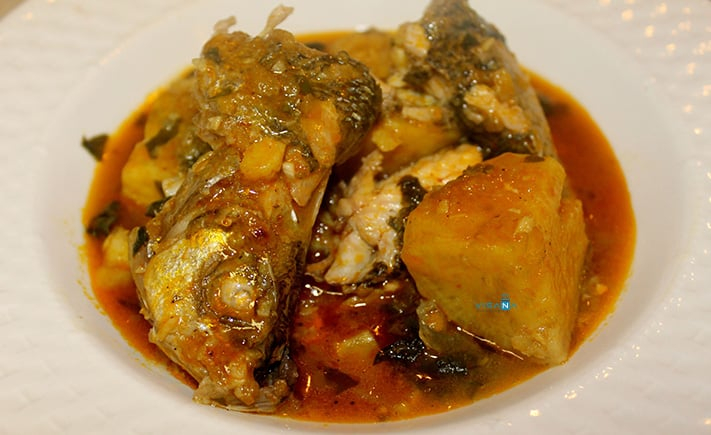
visana.vn
